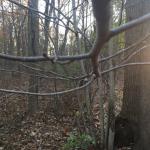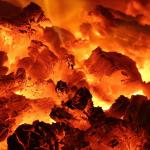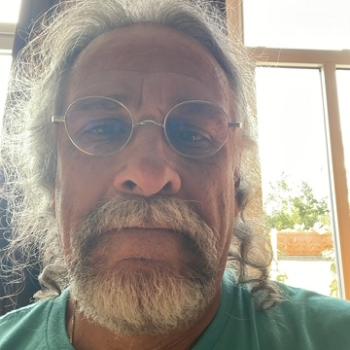The Celtic year is divided into two halves. Summer and Winter. The former is a time of working and summer experience. This ‘summer experience’ is written and talked about among Celtic pagans as Samos. ‘Winter experience’ is expressed as Giamos. Our experience of these forces is all we can talk about because they themselves are an invisible working of nature.
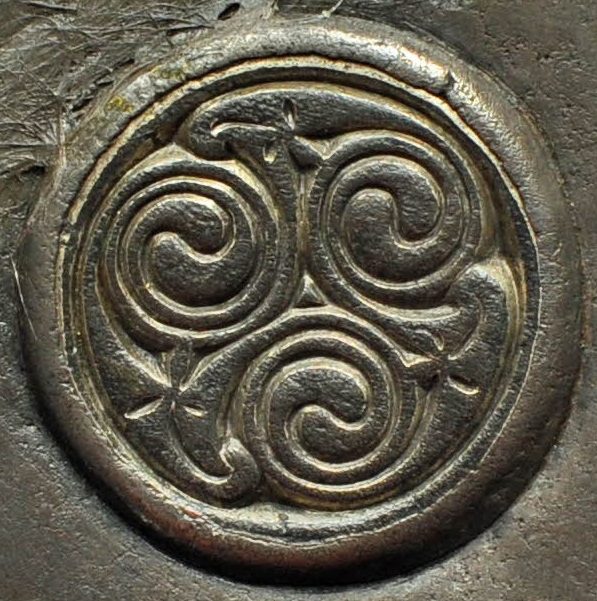
- A triskellion showing three spirals of dual forces.
The year was often seen by our deep Celtic ancestors to be an opposition/cooperation between these two divine powers or principles. While a similar struggle is seen in modern paganism between the Holy King and the Oak King, Gaelic pagans hold the worldview that day and night, summer and winter, life and death, are all part of principles which respectively emanate from the heavens and from the deep, or Gaulish ‘dumnos’ (Segomaros). In Scottish lore, An Cailleach, the winter witch hag tries to prolong winter. Certain omens are taken to determine if the winter witch intends to extend or release her power of winter, or Giamos, over the land.
There is a clear belief in the body of Celtic language and lore of interplay between the forces light and darkness. It is important to stop here and say that celtic thought does not associate light and dark with good and evil respectively, not at least until the Celtic speaking peoples were Christianized.
Rather than good and evil, instead light and darkness speak more to what can be seen and what is hidden. Instead, darkness relates to the deep abyss located below the well of potentials and the darkness that precedes existence, the darkness in which all things begin.
Winter, for the Gaels, was a time of inward dwelling. Abundance at the beginning, starvation at the end, with a graduation toward the latter over time. Winter would be a time for making crafts and telling stories, for being with the family and staying warm. Starting with Samhain, or “Summer’s End”, winter increases as the sun’s decline is inevitable. Ancestors endured the winter months and would most likely lose weight as their access to carbohydrates decreased.
The storytelling tradition in Celtic lands takes place mostly in the winter time. People could carve or knit while stories were being told. Certain kinds of housework are conducive to listening to tale-telling. At one time, the bulk of the common storytellers in Europe were in Celtic lands.
Segomaros refers to Samos and Giamos as cosmic ‘principles’ and says they exist in “a complementary duality”. Samos represents the summer, daylight, the celestial heavens, life, ordered cosmos, the tribe, and the profane. Giamos is winter, nighttime, the chthonic deep, death, cosmos in chaos, the wilderness, and magic (Segomaros).
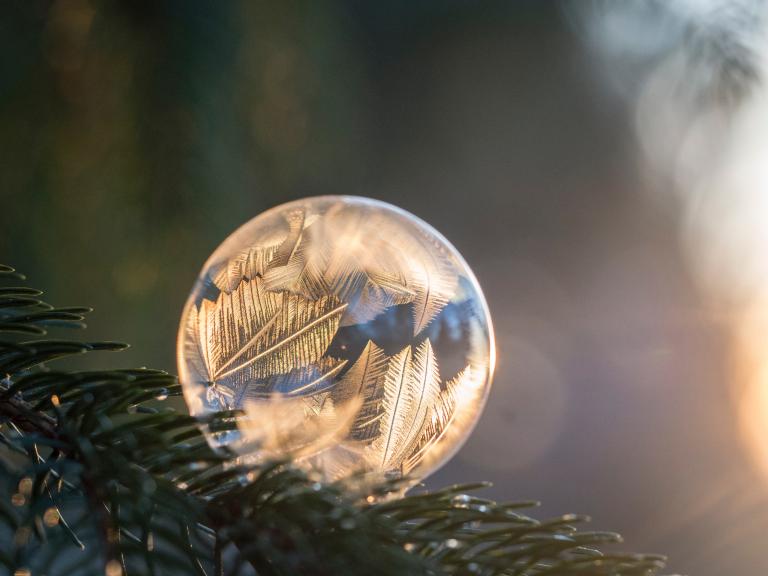
- Photo Courtesy of Aaron Burden via Unsplash
To give focus, Samos compares to Innangard as Giamos compares to Utengard in germanic paganism. These principles alternate not only in day and night but in winter and summer, in life and death, in every decrease and increase, even the waxing and waning of the moon.
Segomaros says, “It determines which spiritual influences are dominant at any time, and which activities are of good omen” in reference to the Samos-Giamos alternation.
This duality had a variety of expressions. Night had associations with the otherworld, for example. During the darkest hour of the night, the feeling of being watched and that of not being alone is a phenomenon even non-theists can’t escape experiencing. It was believed that children born in the dead of night were able to see ghosts and phantoms that the children of the day could not. Rees and Rees say that “Night, in a very real sense, belongs to them” in reference to the fairies and spirits which are nocturnal. It is seen as good that people recede to their own hearths. In Ireland today, it is considered bad to be out all night. Such behavior is seen as a disruption of the activities of the little people(Rees and Rees 83).
The dead come up to the windows of the house every hour between ten and twelve o’clock to ensure all is secure and silent. One way of showing respect to the dead is by turning in early(Rees and Rees 83).
People would avoid throwing out water and ashes at night, especially on the west side of the house which is the direction in which the fairies process. If the west is the directional source of Giamos, and Giamos is associated with night, the night with the fairies, stories like Echtra Nerai come together to support these avoidances. In the aforementioned tale, those who smoored their fires and emptied their water pales before nightfall were protected from the strange dead approaching their home. And in the home where Nera could enter, the one with pales full and fires burning, the family faced a curse at the hands of a ghost. The Anoan, or the Breton concept of the collective souls of the dead, were cold and sought out the warmth of the fires of their old homes(Koch 53). There is a certain vulnerability physically and magically that occurs at night when the predominant influence is Giamos. So we say our smooring charms at bedtime, though we may not go to bed early in a modern context. People also didn’t whistle or call their child by their name while out at night. The crowing of roosters would send the elves and fairies back to their abodes(Rees and Rees 83).
The first of May is seen as the beginning of summer. The first of November was the beginning of winter. As the day is divided, so is the year. The Fiana, a woodland warband, lived in the forests from Beltane to Samhain, and in the winter they returned to live among society. Herders and the children of nobles had similar patterns. Nature is seen to sleep or to rest during winter and be awakened during summer(Rees and Rees 84). It is the interplay between these two states that the Celts saw as essential to the continuation of the cycle of life upon the land. It may be seen as analogous with breathing, or rising and falling, or anything that oscillates in a continued existence. In this way, Samos is wave crest and Giamos is wave trough. This is not different from a Taoist view of nature.
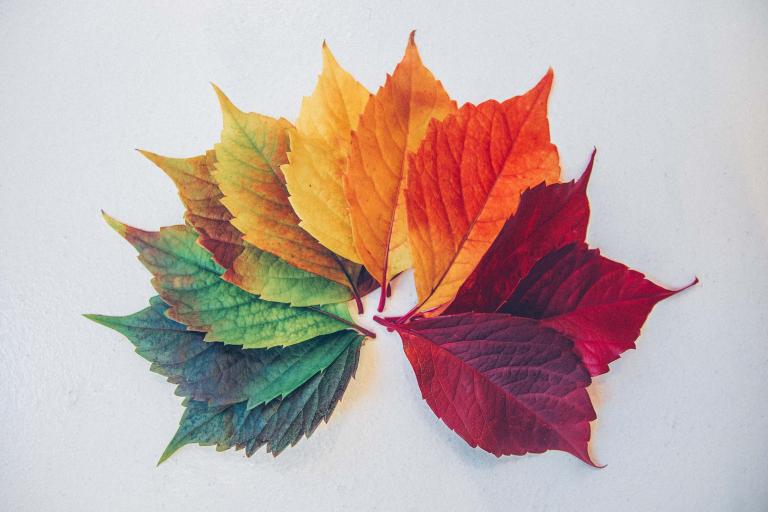
- Photo courtesy of Chris Lawton via Unsplash
Scots referred to the depths of winter as Dúdlachd, meaning ‘gloom’. In several Celtic regions, namely Scotland, November was referred to as the ‘black’ or ‘dark month’(Rees and Rees 84).
In the Coligny calendar, months are arranged as lucky and unlucky, which isn’t unique to the celts. Months in southeast Asia and Athens are called complete or defective and full or hollow depending on if they have thirty days or less respectively. There also are months named Samon and Giamon, either relating to the beginning or end of summer and winter, which is not clear(Rees and Rees 86). But in Ireland, the meaning of the festival name Samhain might support the idea that Samon and Giamon occur at the end of the Samos and Giamos seasons. Giamon would mean winter’s end. However, the black month being November in three different Celtic lands might insinuate that Giamon occurred at the beginning of geimhreadh, or winter. Interestingly, the Coligny calendar is arranged such that at the beginning of each five-year cycle, Samon and Giamon occur as a lucky month, but by end of the five years, they occur as unlucky months(Rees and Rees 87).
The moons were broken into bright and dark halves with a period the calendar called ‘renewal’ or ‘returning light’. This is the dark moon upon the end of which the first sliver of the moon can be seen a day after, or sometimes even 12 hours after the new moon itself.
The celts view day and night as the microcosm of all time and the world, ‘bitus’, which we in Gaelic paganism call Bith. The night precedes the day, as the primordial deep precedes creation.
Certain acts were taboo at sunset and sunrise because these were times of danger as Giamos and Samos influences shifted. This danger is most increased on May first and November first. These times are a seam in the natural order. In wales, these times were known as ‘spirit nights’. In Celtic thought, disorder was let free into the world at these two junctures as part of keeping the order of the world. It was a night that fairies were about(Koch 202) and witches were casting spells, and omens were taken by all levels of society. During both times, household fires were relit from ceremonial bonfires. Samhain is the stronger of the two junctures between winter and summer, this is because it is representative of nightness and Giamos, being that it ushers in winter activities. And therefore it isn’t strange that it is called ‘puca night’ and that the Sidhe, the fairy mounds, are said to be wide open. This was a night that the souls of the dead could visit(Rees and Rees 87). Fruit and crops left unharvested this day belonged to the puca(92) and the puca spit on them.
The 4 days that are considered fire festivals are called ‘witches days’(93). These occur on May 15, November 11, August 1, and November 1. Lending coals, money, or property on these days, as it is on May 1, is seen to be unlucky.
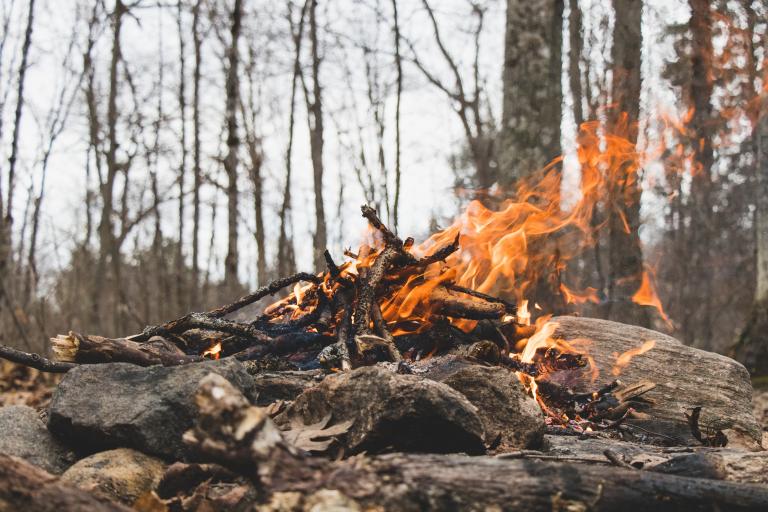
- Photo courtesy of Harishan Kobalasingam via Unsplash
The major interest here is in thresholds between forces, time, and seasons. In Celtic custom, water which flows between three parishes or towns has curative properties. It also has the power to wish away profit on milk and butter on Bealtaine and to break such a charm. Stiles over fences was a place where ghosts like to sit, and the boundaries of places in Ireland were ritually redefined at this time. Bealtaine, at the beginning of Samos, is when our ancestors would ‘beat the bounds’ and ‘mend the fences’(94). Magic is afoot at the boundaries of space and time.
Alexei describes polarity between Samos and Giamos as “The primary guiding concepts of the Celtic worldview…” Neven Henaff, a Breton writer refers to it as the Sam-Giam opposition. Alexei says that nothing we experience isn’t made of a mix of both Samos and Giamos(108). But also, the cycle of life, death in Teach Duinn, and then rebirth is a reflection of this alternation between Order and Chaos. The argument is made that Samos emanates from the heavens and Giamos from the deep. I concur while conceptualizing it via the ordered fire in the heavens and the waters below all consciousness in the well of Segais deep below the top of the Boyne.
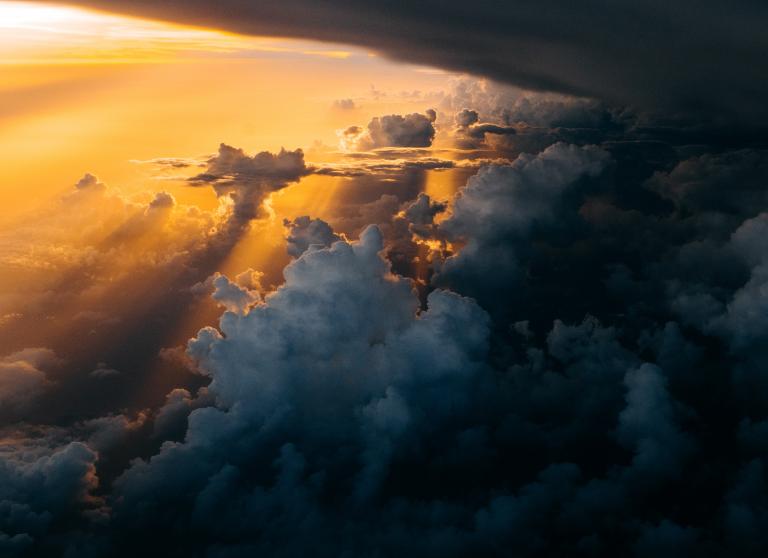
- Photo courtesy of Tom Barrett via Unsplash
And so Samos and Giamos, at least to me, emanate from cosmic Fire and cosmic Waters, Truth and the Void, the Two Powers as used in ADF, an extrapolation of Order and Chaos as seen in Indo-European polytheisms.
“Come Daur Da Blao,
Come Coir Cetharchair,
Come summer, come winter,
Mouths of harps and bags and pipes!” – CMT2
The chant above is a charm from the Second Battle of Maige Tuired(CMT2), used by the Dagda to call his harp, named four-angled music, to him. It is with this harp that Samos and Giamos are controlled.
Two Powers
Mary Jones’ article on Celtic cosmogony, she quotes Strabo, one of the classical sources on the Druids, saying: ‘“{N}ot only the Druids, but also others as well, say that men’s souls, and also the universe, are indestructible, although both fire and water will at some time or other prevail over them” (4.4.4)’ (Jones).
All throughout Indo-European sources, there are several instantiations of fire and water, but in the myths of IE cultures that have come to us, there are overarching principles which are pillars to our worldview. Strabo’s quote and theories on Samos and Giamos show us that the Indo-European ‘Two Powers”, as we call them, extends into the worldview of the Celts.
We can conceptualize the two powers as both coming from Segais, whose waters are so pure they burn hot or from one from below or above. Segais is the foundation of all consciousness and all perceiving of the world, and so it is the foundation of the world. Any world you perceive, the well of Segais is underneath it, and so the place of this power is in the Earth. The fire interacts with the well to create the mists that seed and create the cosmos. Just like fire is in the well, fire is atop our cosmogony, in the ordered fires of the heavens, the sun, the moon, and the stars. Location to some of the otherworldly Islands, across the vast seas between worlds, this is the place from which Samos flows, while Segais is the place with Giamos flows. Samos is born of the potentials of Giamos and represents Truth and the Light of the fire which illuminates the deep so that the things within it can be true and come into being.
We work with these Two Powers as currents from the sky and from earth, we recognize them within us by using visualizations which make one feel connected with sky and earth. As we perform these visualizations, over time, we begin to develop real feelings when they mix and release the third power, the mists of making.


